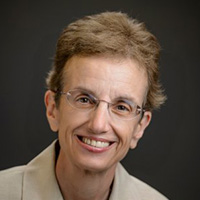Understanding the Christic in an Open Universe
 Let me begin this essay with an anecdote. The other day I was listening to Catholic Mass online – there was nothing wrong with it but there was nothing right about it either. The cross of Jesus Christ hung in the center of the Church; to the right of the altar was a large picture of Divine Mercy, with the colorful radiating energies emanating from the heart of Jesus. To the right was a golden statue of Mary holding the infant in her arms. Other than the Divine Mercy painting, a similar altar scene could have appeared in 1820 in the same way it did in 2020 because the essential doctrines of Christianity have not changed since the fifth century AD. Catholic catechetical theology is summed up in several key ideas: God created us, we fell into sin, Jesus came to save us and now we must work out salvation in order to attain eternal life with God. Even the songs for this online Mass were traditional ones I grew up with in the late 1960s and 70s; many of them were composed in the nineteenth and early twentieth centuries. In other words, the Catholic liturgy today is not much different from the Catholic liturgy of yesterday. In his essay, “The Heart of Matter” (a “must read” essay for anyone trying to understand his notion of “The Christic”), Teilhard recounts how “gentiles” or those outside Christianity claim that “Christianity no longer stimulates the need to worship for the modern mind, but rather paralyzes it.” He continues by saying, “how often have I myself come close to believing this. . . .It is as though we believed in a Christ who diminished the stature of God.” (“Heart of Matter,” 54). Rather than building up the world, Teilhard thought, Christianity is depleting it of energy. He felt that the inability for Christianity to adapt its doctrines to a world of change and complexity created a spiritual infantilism that enervated the world. Once we appreciate how he understood God and creation, we can sympathize with his sensitive critique of Christianity. If we want to understand Teilhard’s Christology, then it is best to place everything we learned in a drawer and focus on two essential ideas: first, the incarnation (which is the doctrine of Jesus Christ) means that God has entered into materiality, and, second, we are in evolution in which change and complexity are accompanied by a rise of consciousness.
Let me begin this essay with an anecdote. The other day I was listening to Catholic Mass online – there was nothing wrong with it but there was nothing right about it either. The cross of Jesus Christ hung in the center of the Church; to the right of the altar was a large picture of Divine Mercy, with the colorful radiating energies emanating from the heart of Jesus. To the right was a golden statue of Mary holding the infant in her arms. Other than the Divine Mercy painting, a similar altar scene could have appeared in 1820 in the same way it did in 2020 because the essential doctrines of Christianity have not changed since the fifth century AD. Catholic catechetical theology is summed up in several key ideas: God created us, we fell into sin, Jesus came to save us and now we must work out salvation in order to attain eternal life with God. Even the songs for this online Mass were traditional ones I grew up with in the late 1960s and 70s; many of them were composed in the nineteenth and early twentieth centuries. In other words, the Catholic liturgy today is not much different from the Catholic liturgy of yesterday. In his essay, “The Heart of Matter” (a “must read” essay for anyone trying to understand his notion of “The Christic”), Teilhard recounts how “gentiles” or those outside Christianity claim that “Christianity no longer stimulates the need to worship for the modern mind, but rather paralyzes it.” He continues by saying, “how often have I myself come close to believing this. . . .It is as though we believed in a Christ who diminished the stature of God.” (“Heart of Matter,” 54). Rather than building up the world, Teilhard thought, Christianity is depleting it of energy. He felt that the inability for Christianity to adapt its doctrines to a world of change and complexity created a spiritual infantilism that enervated the world. Once we appreciate how he understood God and creation, we can sympathize with his sensitive critique of Christianity. If we want to understand Teilhard’s Christology, then it is best to place everything we learned in a drawer and focus on two essential ideas: first, the incarnation (which is the doctrine of Jesus Christ) means that God has entered into materiality, and, second, we are in evolution in which change and complexity are accompanied by a rise of consciousness.
For Teilhard, God and world form a natural pair. He called this the principle of complementarity. He insisted that a genuine “complementarity” exists between God and the world; that is, God and world form a mutually affirming union. What makes the God-world antimony insoluble is that we first split up a natural pair and then persist in considering the two terms in succession.The optimal way to understand God and world is to perceive God as different from the world in nature but personally linked to it in a relationship of mutual complementarity. Teilhard’s God-world relationship could be described as “cosmotheandric,” that is, cosmic, human and divine all at once. God is completely other than the world and yet unable to dispense with it. It is not the complete dependence of the world upon God (as in Thomistic metaphysics) but the “complementarity” of God and world in such a way that one cannot adequately exist without the other. Reflecting on Teilhard’s doctrine, Thomas King wrote:
Matter is the principle of otherness. In matter God and man can become other than what they are. Through matter God and man can meet. God is not found through opposition to matter (anti-matter) or independent of matter (extra-matter) but through matter (trans-matter).[i]
We take hold of God in the finite; God is sensed as “rising” or “emerging” from the depths, born not in the heart of matter but as the heart of matter.[ii] Teilhard writes that “matter is the matrix of Spirit and Spirit is the higher state of matter” (“Heart of Matter,” 35). Elsewhere he states that “matter is the matrix of consciousness, and consciousness born of matter is always advancing toward some ultra-human,” which he describes as a “second species of Spirit” emerging in evolution (“Heart of Matter,” 45). Of course this requires a more detailed explanation than what I am saying here but essentially Teilhard believed that without creation, something would be absolutely lacking to God, considered in the fullness not of his being but of his act of union. He writes: “I see in the World a mysterious product of completion and fulfillment for the Absolute Being himself” (“Heart of Matter,” 54). Union with God must be effected by passing through and emerging from matter, which is another way of saying that God must be found in all things.[iii]
Building on the idea that love is self-communicative, Teilhard indicated that in the incarnation, God “empties” Godself into matter or rather matter itself is the self-emptying of God. Since matter is continuously coming into being, God is constantly becoming “element” drawing all things through love into fullness of being. God incarnates or invests Godself organically with creation, immersing Godself in things, in the heart of matter and thus unifying the world.[iv] This investment of divinity in materiality is the Christ. The universe is physically impregnated to the very core of its matter by the influence of divine nature.[v] Everything is physically “christified,” gathered up by the incarnate Word as nourishment that assimilates, transforms, and divinizes.[vi] The world is like a crystal lamp illumined from within by the light of Christ. For those who can see, Christ shines throughout the cosmos and in matter.[vii]
In 1950 Teilhard discovered the doctrine of the primacy of Christ, formulated by the Franciscan theologian Duns Scotus in the fourteenth century. He exclaimed: “This is the theology of the future!” He had spent his entire life trying to illuminate God coming to birth at the heart of matter through the power of love. He saw his vision recapitulated in the Scotistic notion of the primacy Christ: Christ is first in God’s intention to love. From all eternity, God willed to become incarnate, to share divine love by becoming one with us, in the person of Jesus Christ. In March 1955, a month before his death on April 10th, Teilhard composed his final essay, “The Christic,” the mystical masterpiece of entire vision. On one hand it is a difficult text because it recapitulates years of deep reflection on the mystery of Christ; on the other hand, it liberates Christ from the classical formulas and fixed doctrines. Teilhard’s vision is simply one of divine love evolving the universe into a super personalizing center of life. This is what he wrote in The Christic:
I saw how the joint coming of revelation and science had suddenly opened a door for twentieth-century Man into a sort of ultra-dimension of Things, in which all differences between Action, Passion [in the sense of being acted upon] and Communion vanish. . .by reaching an explosive climax” [p. 83] – the christification of the universe symbolized by the Christ event. He continues: “I saw the universe becoming amorized (amor is Latin for “love”; hence “amorizing” the universe means building up the universe in love) and personalized in the very dynamism of its own evolution. [“The Christic,” 83]
When Teilhard writes about the emergence of Christ, he is not limiting his thought to the historical person of Jesus. Like Raimon Panikkar, he realized that the Christ is more than Jesus. The term “Christ” signifies divine love incarnate throughout the whole of creation. Everything is born out of the love of God, expresses God’s love, and is oriented toward the fullness of divine love. Every aspect of created life, from energy particles, to stars, fish, bees, trees and human persons, expresses the love of God and is dynamically oriented toward God. Everything that exists has a divine dimension to it, a “Christic” dimension, that is an ineffable quality to every person, star, plant, bird, every creaturely being, an ineffable poetic dimension of life written in the grammar of divine love. There is nothing profane below here, Teilhard realized, for those who know how to see. We simply cannot get our heads around the truth of our existence: God and creation are entangled and Christ is the symbol of this entangled reality. In the words of Raimon Panikkar: “There are not three realities: God, Man, and the World; but neither is there one, whether God, Man or World. Reality is cosmotheandric.”
Teilhard used the term Christogenesis to indicate that the biological and cosmological life—cosmogenesis—from the point of faith is Christogenesis. The dynamic process of creation is God uniting to form one with something, to be immersed in it. Teilhard recognized that there is a unifying influence in the whole evolutionary process, a centrating factor that continues to hold the entire process together and move it forward toward greater complexity and unity. The ultimate mover of the entire cosmogenesis, he indicated, is something that is simultaneously within as tendency, desire and purpose and in front of the advancing wave of development, as its ideal culmination. Teilhard identified this immanent principle with God. He wrote, “God is entirely self-sufficient (i.e. God does not need anything to be God); and yet the universe contributes something that is vitally necessary to him (i.e. God’s ‘Godness” comes to life in creation).
For Teilhard, evolution is christogenesis or God coming to be at the heart of matter. A Christocentric universe is not only possible for Teilhard; it is the only universe that makes sense because evolution is an irreversible process of convergence, complexity and consciousness; that the universe is becoming increasingly personal (computer technology actually enhances this idea). Life continues to personalize toward the fullness of Christ, totus Christus. What Teilhard realized is that the fullness of Christ involves change and movement. Christ is not static and fixed; rather the fullness of Christ is up ahead, we are part of this Christic becoming because Christogenesis is participated Being in evolution whereby God is fulfilling Godself and completing Godself, as we move toward the pleroma [Christianity and Evolution, 178]. In Teilhard’s words, creation “can be effected only by an evolutive process (of personalizing synthesis) and that it can come into action only once: when absolute multiple is reduced, nothing is left to be united either in God or ‘outside’ God.” In short, the many are becoming one through an ineffable power of attraction, which is God Omega. We are moving toward the unity of created life fully entangled with divinity; this is the pleroma or the fullness of Christ, that Saint Paul writes about and what Teilhard describes in his essay on “The Christic”. He writes:
If. . .the Universe—our Universe—does indeed form a sort of biological ‘vortex’ dynamically centered upon itself, then we cannot fail to see the emergence at the system’s termporo-spatial peak, of a unique and unparalleled position, where Christ. . .becomes literally and with unprecedented realism, the Pantokrator. . . .Once he has been raised to the position of Prime Mover of the evolutive movement of complexity-consciousness, the cosmic Christ becomes cosmically possible. And at the same time, ipso facto, he acquires and envelops in complete plenitude, a veritable omnipresence of transformation. For each one of us, every energy and everything that happens, is super-animated by his influence and his magnetic power [translation: given a sufficient amount of time, the power of divine love in evolution draws and will draw everything in science, politics, history, ecology, social relations, into an ever-growing unity in love. Teilhard is convinced that the universe will not fail or annihilate itself but will consummate in a new consciousness of being in love. (“The Christic”, 94)
Of course we have nothing in our present Liturgy or catechism that remotely symbolizes a Christogenic vision. Teilhard recognized that if we are “to survive” and “super-live” (his words) then our present worship needs to be reformulated toward the Christic. He wrote: “In a system of cosmo-noo-genesis, the comparative value of religious creeds may be measured by their respective power of evolutive activation” (“The Christic,” 97). If we are serious about God then we must also be serious about evolution; if we hope for a future fullness of life, then we can do no other than change our doctrines, symbols and rituals to express our deepest beliefs in an evolving world. At present, we simply do not have an adequate religious support system or language for the world in which we live; the power of our belief systems is expressed in our capacity to evolve the Christic. Teilhard was deeply aware that renewing the sacramental life in an open, evolving universe could release the Christic as the organic power of life. His vision of the transformative power of the Eucharist is a glimpse into a new form of Liturgy: “And then there appears to the dazzled eyes of the believer the Eucharistic mystery itself, extended infinitely into a veritable universal transubstantiation, in which the words of the Consecration are applied not only to the sacrificial bread and wine but, mark you, to the whole mass of joys and sufferings produced by the Convergence of the World as it progresses. And it is the, too, that there follow in consequence the possibilities of a universal Communion.” (“The Christic,” 94)
The symbol of Christ relates to the whole of cosmic life and reveals the dynamic capacity of matter for divine love; everything that exists expresses divine love and thus has a Christic dimension. Awareness of God’s indwelling presence at the heart of matter is vital for guiding evolution toward its fulfillment. Christic evolution cannot progress toward more life, however, without finding the inner icon of Christ as the source of the emerging Christic. Raimon Panikkar describes the icon of Christ in every being as “Christophany.” Christ is no longer an external object of adoration. Knowing Christ from the inside is what Panikkar calls a “pneumatic” (subject-to-subject, or “I-I”) interabiding, rooted in our own deepest experience of spiritual seeking and finding. I discover myself as “the thou of an I,” (“God is the I, and I am God’s Thou”). This is the genuine experience of Christian non-dualism (not one, not two, but both one and two), preserving both the interpenetration of divine-human identity and the reality of personhood created and sustained in love. Christophany is universal; an invitation to every person to evolve into God, to be drawn in love, to live from a new center of love and to be oriented toward the fullness of love. Christianity encapsulates the Christophanic life in a particular response to divine love, exemplified in Jesus the Christ, but not to the exclusion of other religions, animal life, plant and the entire ecosphere. To worship the God of evolution in a Liturgy of Christogenesis must be a priority for everything else is contrived or simply useless.
Notes
[i] Thomas M. King, Teilhard’s Mysticism of Knowing (New York: Seabury Press, 1981), 103.
[ii] King, Mysticism of Knowing, 103.
[iii] King, Mysticism of Knowing, 66–7.
[iv] Teilhard de Chardin, Phenomenon of Man, 293 – 294; Timothy Jamison, “The Personalized Universe of Teilhard de Chardin,” in There Shall be One Christ, ed. Michael Meilach (New York: The Franciscan Institute, 1968), 26.
[v] Ursula King (ed.), Pierre Teilhard de Chardin: Writings (New York: Orbis, 1999), 96.
[vi] Teilhard de Chardin, “My Universe,” in Process Theology: Basic Writings, ed. Ewert H. Cousins (New York: Newman Press, 1971), 254.
[vii] This is the thesis of Teilhard’s classic The Divine Milieu. See also his “My Universe,” 249 – 55.
 View print-friendly version
View print-friendly version
15 Comments
Related Posts

Love and Political Order: The Evolutionary Path to Unity
We live in an age of fragmentation. Politically, we witness the hardening of tribal identities and nationalist divisions. Ecologically, we confront a world torn between exploitation and preservation. Socially, we…


Thank you. So often I feel a great disconnect when goin to mass. This artle and so many others let’s me know why. Sister Theresa RDC
Let us worship the God in all, the holiness of every moment recognized as Divine manifestations
Yes, I too feel this is a very succinct way of encapsulating what both Teilhard de Chardin and Ramon Panikkar were trying to awaken us toward. Opening to their vision, Reflecting on their words in quiet; and allowing a personalization of the view Ilia is offering us of their works, is a crucial step towards the path Ken pithily speaks of in conversation with Thomas Keating’s idea of a “conveyor belt”. Keating also mentioned the dire need of this conveyor belt within the leaders of the Church.
Is anyone working on a Liturgy of Christogenesis?
After just participating in OmegaCenter’s presentation with Mark Wallace
( Christianity, Ecology..) the thesis of your article hummed within me.
My mind formed the word ” Symbiotic “. This is God’s relationship with the cosmos. A type of symbiotic relationship where both “Beings” benefit from the relationship they are in.
I agree with Prof. Wallace that there were two incarnations. One we all fully recognize -that of Jesus but also one most fail to acknowledge. Fail to learn about or recognize in any way. That is the incarnation of God in ALL. Everything from the air, to the dry the water, fire rock, mountain, or cougar is filled with Spirit, filled with sacredness, with Being, with”Thou”, with consciousness and sentienceness. Human life does not have a “specialness” granting supremacy over any other life-including life which seems “inanimate”.
As Prof. Wallace pointed out, this belief in the sacredness of all was part of Christianity’s DNA. Unfortunately, a recessive trait requires the union of 2 genes ( and each pregnancy ‘try’ is a new 1 in 4 dice throw) so it will take much work to move us ” back to the future” ….or will it?